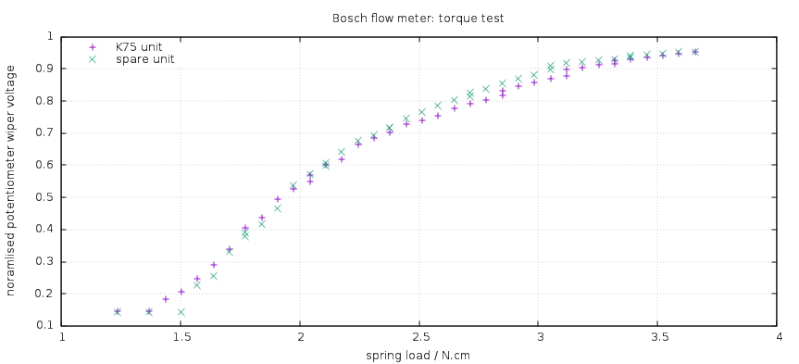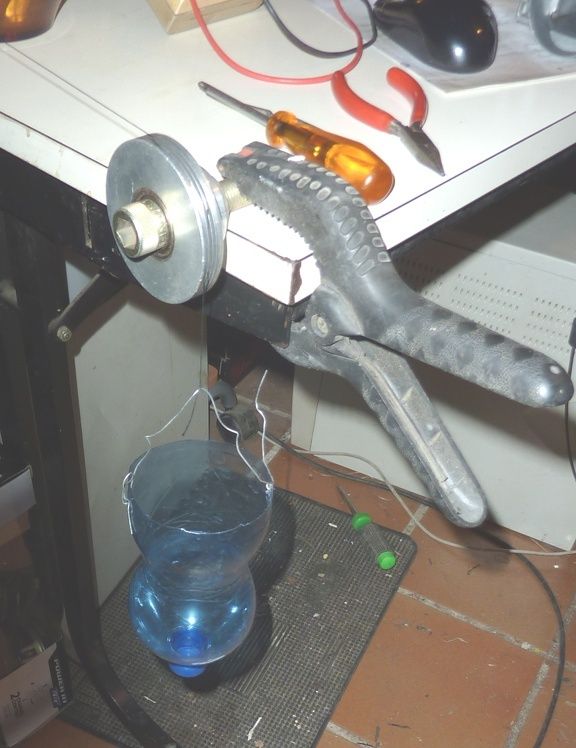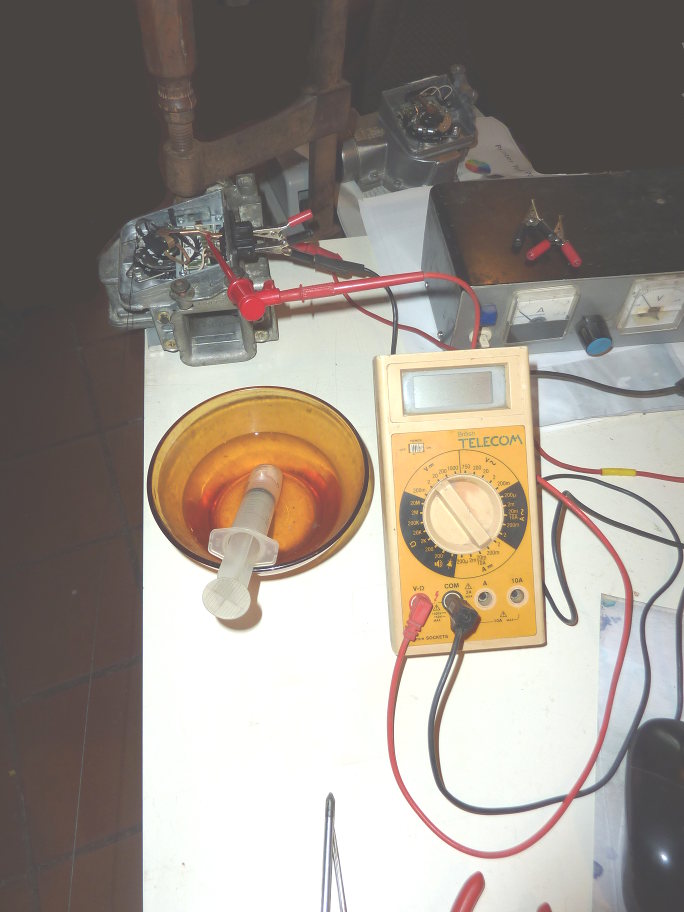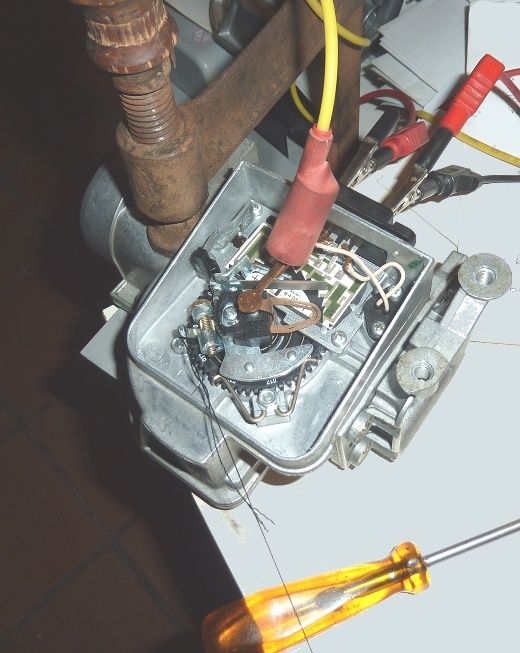OK, after some more adjustments and road tests I've got this spare flow meter set up real nice.
In 1st and 2nd gear, cutting the throttle and opening up again is really smooth and without hesitation. That was one of faults I'd noted before that I was hoping to fix. Good result there.
Having taken it down to zero dead zone , ie. output moves as soon as the vane moves. performance was not optimal. Plug tests were running a little darker and mid range power was a little less. Not by much but enough to be felt pulling hard up hill.
It's difficult to set the wiper accurately since once the lock screw is loosened it tends to jump all over. It needs a bit of trial and error, using the torque test to quantify the torque position where the output starts to move.
The fourth line on the graph is where I had tested with two notches more tension on the spring. This adds some context to the effect of zero point adjustments. I did not find even a single notch in either direction to be better. One notch weaker ran well but did give a little less power. This may be an option as an economy tuning, subject to checking on a gas analyser that it is not running dangerously weak.
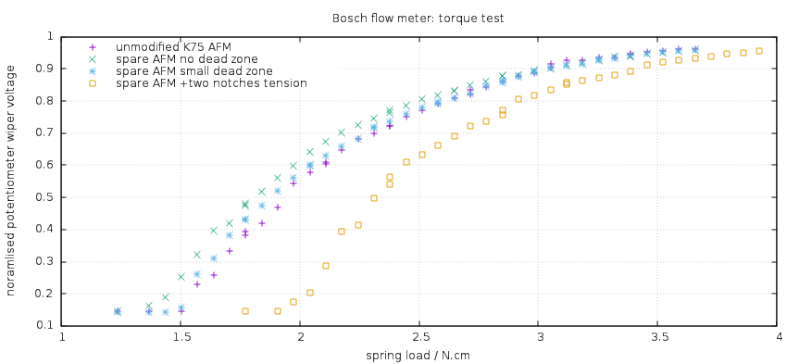
As can be seen, it is quite close to the AFM that was on the K75 to start with opening just a tad earlier then having higher output through low and mid range; then almost identical at top of the range. The optimal mixture screw setting now comes out somewhere in the mid portion of its adjustment range. ( instead of bottoming out as before ).
I'm very pleased with last road test. The bike's a real pleasure, running better and has more power than before. Especially the low throttle pick is a lot smother. This is the unit I've adjusted to get a clean new track on the carbon and is now better than the original unit which left I unmodified. Thanks to Charlie for that suggestion.
It will be interesting to see how this looks on the gas analyser, but I won't be too inclined to move it now anyway.
My conclusion thus far is that if there is some movement in the AFM unit over time that merit a little fine tuning it is probably best done by tweaking the amount of dead zone on the wiper. If it is necessary to change the position of the wiper because of bad track wear on the potentiometer, this will need resetting anyway.
I'll wait to see the results of the gas analysis and then summarise all this in a new thread.


 Re: Flowmeter restoration Tue Apr 05, 2016 8:32 pm
Re: Flowmeter restoration Tue Apr 05, 2016 8:32 pm













